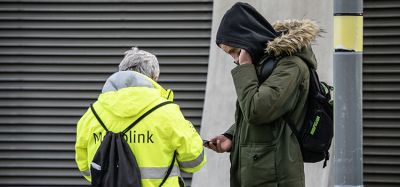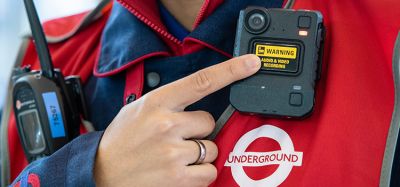The Rotterdam Electric Tram (RET) and measures for socially safe public transport
- Like
- Digg
- Del
- Tumblr
- VKontakte
- Buffer
- Love This
- Odnoklassniki
- Meneame
- Blogger
- Amazon
- Yahoo Mail
- Gmail
- AOL
- Newsvine
- HackerNews
- Evernote
- MySpace
- Mail.ru
- Viadeo
- Line
- Comments
- Yummly
- SMS
- Viber
- Telegram
- Subscribe
- Skype
- Facebook Messenger
- Kakao
- LiveJournal
- Yammer
- Edgar
- Fintel
- Mix
- Instapaper
- Copy Link
Posted: 6 October 2007 | Beatrix Lourens, Head of Security at RET, and Krishna Baboelal, Area Manager | No comments yet
The RET never intended to play a role in the war on terrorism, but it did want to take preventive measures to ensure an adequate response in the event of a possible terrorist attack. In addition to its sound social safety policy, the RET also has an efficient organisation to cope with disasters. Having both of these is essential in designing an effective anti-terrorism policy.
Safety policy concentrates primarily on measures to make passengers feel safe on public transport. Research has shown that passengers attach importance to the visible presence of personnel that, in combination with the police, have the authority to take repressive measures. This is further enforced with the presence of cameras.
The RET never intended to play a role in the war on terrorism, but it did want to take preventive measures to ensure an adequate response in the event of a possible terrorist attack. In addition to its sound social safety policy, the RET also has an efficient organisation to cope with disasters. Having both of these is essential in designing an effective anti-terrorism policy. Safety policy concentrates primarily on measures to make passengers feel safe on public transport. Research has shown that passengers attach importance to the visible presence of personnel that, in combination with the police, have the authority to take repressive measures. This is further enforced with the presence of cameras.
The RET never intended to play a role in the war on terrorism, but it did want to take preventive measures to ensure an adequate response in the event of a possible terrorist attack. In addition to its sound social safety policy, the RET also has an efficient organisation to cope with disasters. Having both of these is essential in designing an effective anti-terrorism policy.
Safety policy concentrates primarily on measures to make passengers feel safe on public transport. Research has shown that passengers attach importance to the visible presence of personnel that, in combination with the police, have the authority to take repressive measures. This is further enforced with the presence of cameras.
The RET has achieved the visible presence of personnel by deploying conductors on all trams. Primarily, they act in a monitoring capacity by checking tickets and ticket sales. In addition, employees are permanently stationed at all underground metro stations to help passengers find their way, and to ensure that no irregularities occur in the stations. RET maintains order in co-operation with the police, the Public Prosecution Service and the city management department. Co-operation is translated into arrangements on maintaining order where the parties agree on their individual responsibilities and when they should act.
Some bottlenecks have been identified in the city of Rotterdam which will require additional attention. These are points where large groups of people gather, usually around shops. In addition to the personnel, various security cameras are used to monitor these bottlenecks. Indeed, the RET has equipped every metro station with security cameras. There are a total of 1,200 cameras that are kept under surveillance by the RET Central Traffic Control. In addition to these cameras, all new buses and trams are equipped with a camera.
A project was recently started for railway carriages that will involve studying wireless transmission of camera images from certain points on the route. The RET network will then be used to effectively dump this data from the access points at Central Traffic Control. This will enable more immediate surveillance of events and action to be taken where necessary. However, because not all transport systems are equipped with cameras, RET is also exploring the possibility of mobile cameras. The aim would be to introduce camera surveillance quickly and efficiently on routes that are considered to be most at risk.
Coping with disasters
The RET has set-up a company contingency organisation to take action in an emergency situation, or where a threat exists, to prevent or limit damage and injury, and return to normal business operations as quickly as possible. The format decided on is an integral contingency organisation that links the emergency response with an organisation to cope with disasters.
This company contingency organisation is supported by numerous measures; for example, the Communicator NXT alarm system and the Incident Master management information system. Using these systems will enable the RET to raise the alarm more efficiently and effectively and log the event. It also ensures that exactly the right people required in a disaster are alerted with one push of a button. They can be alerted by telephone, text message, fax or e-mail. In the event that somebody does not respond to an alert, the next appropriate person on the list can be contacted automatically.
The objective of the company contingency organisation is:
- To protect and rescue travellers, employees and third parties to the best of our ability.
- To limit operational and consequential damage.
- To provide the best possible alternative transport.
- To restore the confidence of travellers.
Naturally, these objectives apply to the entire RET transport area. In circumstances where co-operation on a route exists with third parties, clear agreements must be made with the party concerned; for example, Randstadrail – the light rail connection between Rotterdam and The Hague – which is run in co-operation between RET and HTM. A separate disaster contingency structure has been set up for that line.
Reports of breakdowns in the transport system come in to the Central Traffic Control, which operates 24-hours a day. The organisation to cope with disasters consists of one co-ordinator that is permanently on call, and six chairmen.
There are two methods for instigating the start-up of the disaster organisation, which are bottom-up and top-down. If the start-up is bottom-up, it means that there is a definite breakdown or incident. Reporting is generally made from the site of the incident by personnel, travellers or third parties. The CVL evaluates the incident and takes the appropriate measures, which includes warning the chairman of the Disaster Team. As soon as the chairman of the Disaster Team has been called in, he takes responsibility and will upgrade or downgrade the incident. After consultation with key officials, he also has the authority to end the emergency status. Following this, the active company contingency organisation can then withdraw.
A top-down incident could involve a terrorist threat or activities where a municipal authority may request or demand that the company contingency organisation or disaster organisation is called into action. The role of the RET will depend on the type of disaster.
All of the above-mentioned measures have been audited by the Israeli company I-SEC. Its conclusion was that the measures introduced by RET represent a step in the right direction in combating possible terrorist attacks. However, points to focus on in the short term are:
- An upgrade of the awareness process of personnel and current procedures.
- Better protection of critical parts of the RET and software systems (for example, upgrading camera surveillance).
- For specific advice in relation to vehicles, stations, yards and garages, a risk and threat analysis was recommended.
Of course, implementation of these recommendations will cost money. Because of the need to prepare for possible terrorist attacks in the Netherlands, government subsidies have been provided to enable us to comply in any event with the following recommendation:
- Risk and threat analysis.
- Upgrading procedures.
- Security awareness training for personnel.
Co-operation with I-SEC in 2005 was very satisfactory, and so in 2006, it was decided that they should carry out these three recommendations.
RET was fully investigated in the risk and threat analysis. All areas at stations, yards and garages were visited. Current procedures, (for example, personnel recruitment and contingency procedures), were also examined. After all this had been catalogued, recommendations were made on a segment-by-segment basis. For example, by looking only at the physical building and surrounding area of the station, the risks and corresponding threat scenarios could be established for each station. This thorough investigation gave I-SEC a good idea of the procedures operated within the RET. Because the RET has a good organisation to cope with disasters, with good corresponding disaster procedures, terrorism-related upgrades of those procedures were generally a question of implementing a number of supplementary step, rather than introducing entirely new procedures within the RET.
RET has used security awareness training to ensure its personnel are more alert to suspicious circumstances on public transport. If personnel become aware of suspicious incidents, there is a greater chance that possible attacks can be prevented. It was decided, at first, to send the Metro personnel on the awareness training. Together with the National Co-ordinator for Counterterrorism (NCTb), the following departure points were used to establish the locations most at risk within the RET:
- Locations where there would be a large numbers of victims.
- Locations which are of major importance to our economy and society.
- Locations which have a symbolic value.
All of these risk locations were metro stations. In addition to training the Metro personnel, other functional support groups were trained; for example, the employees of the Central Traffic Control and authorised investigators. Other RET personnel will be trained in future so that everybody knows what to do in the event of an emergency.
The RET has used these measures to create a basis for responding quickly and effectively to terrorist threats. In addition, good co-operation with government and police will be vital in taking action. The RET attaches great importance to maintaining good contact with other public transport companies, both in respect of sharing information and experience.
As well as making personnel alert and upgrading procedures, we must also look at the recommendations on a structural approach to the stations. For example, low poles at a station could prevent a car bomb from being driven on to the platform.
The RET has taken up the recommendation to improve protection of its property and is rebuilding fencing around the metro yards. It was decided to install voltage detection on the fences and add live camera surveillance.
A number of tools have also been developed to raise the alarm during any situation. In particular, the tool to facilitate measures in a situation of a terrorist threat is extremely important. This tool indicates how long, and at what cost, a certain measure can be maintained. If, in the event of a low-level terrorist threat, it is required that all underground stations are guarded 24-hours a day, this tool will indicate how long that can be maintained from RET resources, and at what point, for example, third parties will have to be commissioned. An important aspect here is that if the terrorist threat exists for a longer period, the RET can indicate to the government how long it is capable of maintaining a measure, and at what point possible government support will be needed.
Of course, not all disasters or terrorist attacks can be prevented, but the RET as an organisation is trying to ensure safety for the 600,000 passengers who travel every day, as well as for its own personnel.
Related topics
Security & Crime
Issue
Issue 5 2007
Related organisations
RET
Related people
Krishna Baboelal







